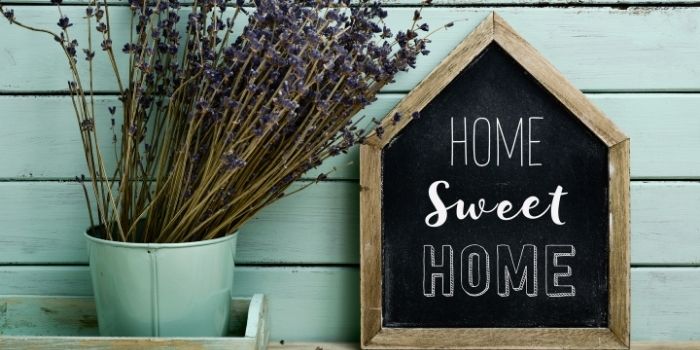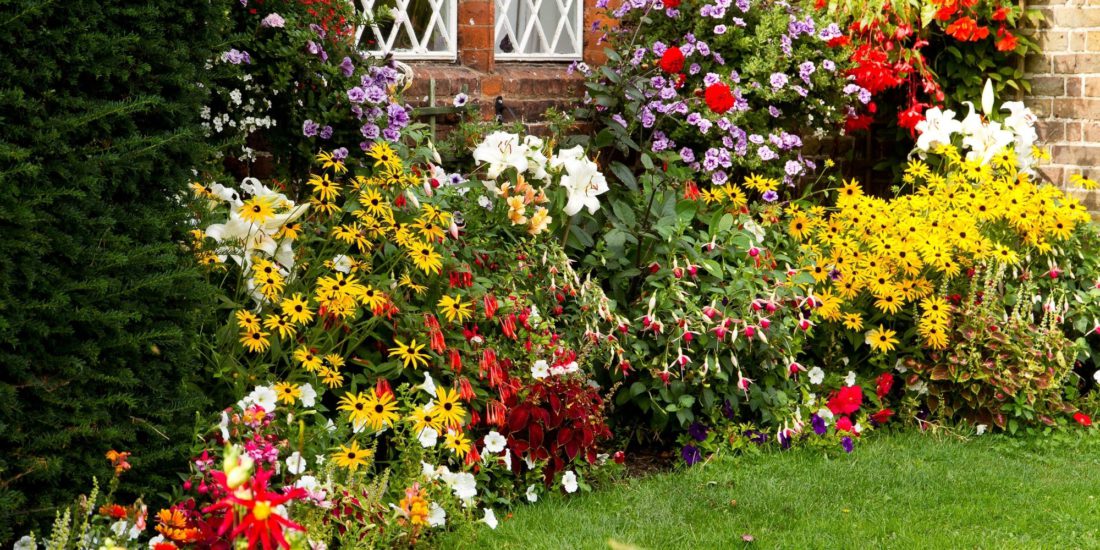Category: Uncategorized
East London Boasts The Highest Rental Yields
July 3rd, 2021
East London Continues to Offer The Best Rental Yields in The Capital

According to a recent survey, east London continues to offer the best rental yields in the capital.
Within east London, the area of Abbey Wood has experienced an influx of savvy investors buying up affordable properties to let near the train station, thanks to the imminent arrival of the Crossrail. With 12 fast central London trains every hour, the promise of this service has significantly bolstered this area’s growth, taking top spot for the best rental yields throughout London for the quarter, at an impressive 6.7%. The highest yield in the area can be found along Yarnton Way to the east.
The latest rental yield research shows that some healthy rental yields are certainly found in London, especially in areas experiencing significant regeneration and Crossrail connection.

Dagenham Road are also benefiting from a proposed national rail service to Fenchurch Street Station in under 20 minutes. With easy access to Lakeside, Romford, and the A13, this area is perfect for commuters and lifestyle seekers alike, and the area is currently enjoying a healthy rental yield rate of 6.3%
Narrowly beating out Q1’s leading area (of Barking) for the third spot on this quarter’s charts is the East London area of Creekmouth. At 6%, the area is producing a strong yield despite being largely known for its industrial estate. This heavily industrial area is one of Dagenham’s greatest employment areas and is therefore popular with renters seeking convenience on a tight budget.
East London, Top Yields
Abbey Wood (East Yarnton Way) 6.7%
Dagenham Road, Beam River 6.3%
Creekmouth 6%
Barking 5.9%
Little Heath 5.8%
Upney 5.8%
Supporting Local Businesses in and around the Hackney area
Clare Hughes. More than just an estate agent.
https://clarehughes.exp.uk.com/embed/#?secret=HwJefvSKeo
07958 031 122
Simple Ways to Make Your New Place Feel Like Home
May 30th, 2021

How to Make Your New Place Feel Like Home
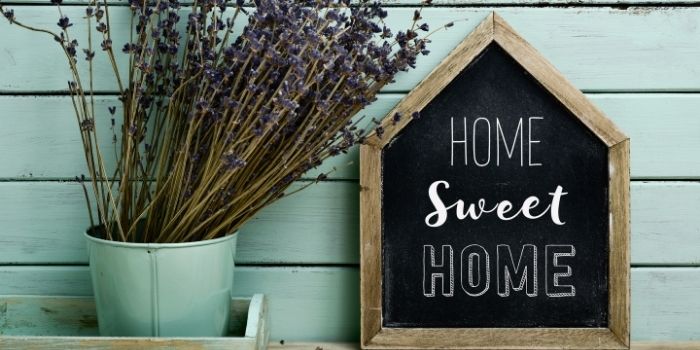
When you’re buying a new house, those first weeks and months are often just as hectic as moving itself. When you finally have the place to yourself, it’s time to start making your house feel like home.
Your house is more than just a building that you live in. It should be a home that makes you feel welcome as soon as you open the front door.
You need to make some changes to a place when you move in to give it that cosy, warm feeling that turns it into a good home.
To help you speed the process, here are some easy ways to make that happen sooner rather than later.
Make your Bed
Having one space where you can retreat at the end of the day is essential, especially during those first chaotic weeks in a new home. Roll out the rug, make the bed, set up the nightstands and lamps, hang a mirror and put up some artwork. It may be tempting to jump from one task to another when there’s so much to do, but resist — it’s worth the effort to enjoy a restful bedroom.
Plug in a Few Lamps
Lamps are essential; you can never have too many. A table lamp for the atmosphere or a floor light to throw a soft glimmer up onto your walls. There are more ways you can use a lamp than you ever imagined. Pretty much any space can be made instantly more homey with some well-placed lamps, string lights, or a battery-powered flameless candle in a lantern. If you can, install dimmers so that you’re able to adjust the strength of the lighting in a room based on your mood and the time of day.
Plants and Candles
You should have plants in every room of your home. They help to improve the air quality, and they look beautiful. As well as making your home appear homier, plants also help boost your mood and lower your stress levels. Pot herbs in mason jars in front of your kitchen window, buy fresh flowers for yourself every week, display them on your dining room table, or pick out one of the many low-maintenance houseplants.
The same goes for candles; dot them about the place and choose especially scented ones to instantly create a welcoming glow and a comforting, familiar scent.
Put out Pillows and Throws
A cosy blanket can go a long way toward making any space more peaceful and inviting, and it’s easy to find a snuggle-worthy throw at any budget. Soft furnishings such as throw pillows, cushions and cosy blankets will add instant character, texture and comfort to your new space. Layer up with anything that brings you joy.
Fill Your Shelves With Books
Shelves full of books make a house feel cosy and inviting — and if you’re a book lover, there’s nothing better than being able to sit down with a cup of tea and pull a favourite book off the shelf.
Hang Art
Research shows that simply looking at art can reduce stress and make you happy. Hanging art in your house helps instil your personality and interests into space. The more you surround yourself with things that make you feel good, the more you’ll capture that feeling of home. Placing familiar paintings, art and photos around your new home is one of the quickest, easiest ways to make it feel ‘yours.
Clean it
If you’re trying to figure out how to make a home cosy, you need to start with making it clean. Your physical space is an expression of the way you feel, and if you want to feel truly relaxed and at home, you should make an effort to keep your space worthy of snuggling into.
Get the Bathroom Set up
Nothing says “new house” like a bare bathroom – but a few accessories in colours or tones that you love will jazz it up instantly. Hang shower curtain, then stock the bathroom with towels, a bath mat, hand soap, body wash, and toilet paper.
Hang up Curtains
One of the best ways you can instantly warm your home and make it showcase your style is to add some new window dressing. Adding beautiful curtains not only improves your home’s appearance but can also help to control the temperature.
Add That Scent
A house that is not filled with inviting smells will never feel like a home. There are loads of ways you can make your home smell nice. Baking in a home is also a great way to fill it with an aroma that instantly smells like home as soon as you open the front door.
A house or apartment should be more than just a place to crash at the end of the day. Simple design details can capture feelings of warmth and pass those feelings on to you whenever you’re in the space. The more things you have around you that make you feel happy, the more likely you’ll make your house feel like home. Before you know it, you’ll feel connected to your new home in a way that extends beyond its four walls.
Clare Hughes
07958 031122
Apartment Or House?
May 2nd, 2021
Apartment Or House? What To Consider When Choosing
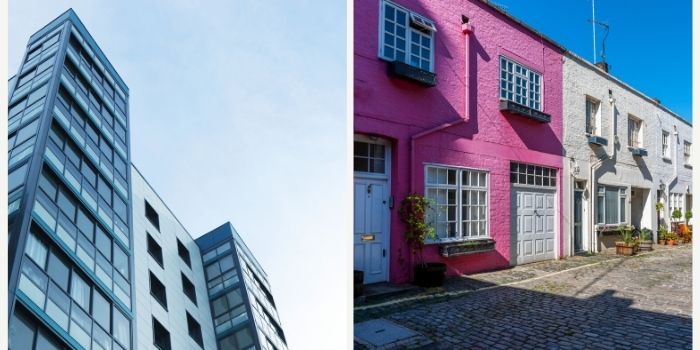
When looking at new places to move into, sometimes it can be challenging to decide if an apartment or a house is the better choice.
Often, an accepted norm for a house purchase is selecting a property at a beautiful location. Choosing a better location would give a better appreciation of your investment. While some opt for apartments, others prefer independent houses.
It’s essential to understand the pros and cons before making a decision, and you’ll also have to weigh your needs. You may want more room and autonomy over your living space. Or you may prefer the conveniences of apartment living, particularly in a complex that provides many services and features.
Here’s what to consider when choosing between an apartment and a house.
Cost
When choosing between an apartment or a house, it’s a good idea to have a budget in mind and compare what you can get for your money. It’s a belief that an apartment is often less expensive to purchase than a house, but this depends on many different aspects, such as the location, size and number of bedrooms.
There’s more to buying a house than paying a deposit and monthly mortgage repayments. All homes will have additional costs, including bills and council tax, but some charges will depend on the property type. Different property types come with a range of extra costs, and if you are still struggling to choose between a house or a flat, those charges could be the deciding factor. These costs include service charges, ground rent and maintenance costs.
Maintenance
When it comes to easy maintenance, apartments are ahead of the houses for convenience and reliability.
If you are buying a flat, your property will likely be situated in a building with others. This building will probably be managed by an individual or company, to whom you will need to pay a service charge and ground rent. This will cover the maintenance and upkeep of the building’s common areas, such as stairs, hallways, lobbies and grounds. It is also likely that repairs and structural upkeep will be a part of this.
While maintenance costs are often included in leasehold tenancies, those with freehold ownership are certainly not exempt. But you will be responsible for organising and paying for any work that needs to be carried out yourself.
Although it is an extra cost to consider, this does allow you the luxury of living within a well-maintained building, without any additional work needed from you.
Living in a house means you are responsible for all of the upkeep and repair costs, including any outside space that requires regular maintenance.
Amenities
It’s hard to compete with the kinds of amenities offered by apartment complexes today. They can include gyms, saltwater swimming pools, tennis courts, dog parks, walking trails and more. Apartments will also provide you with additional security in the form of CCTV, a security guard, coded doorways or gated entrances.
However, when it comes to space and storage, homeowners almost always win out. They have the advantage of such things as attics, garages and more closet space. You will also have your private garden and driveway.
Lifestyle
The amount of time spent in any home will depend on your lifestyle, but if you are a homebody looking for a property you can grow into, you may be better off choosing a house. This is due to the ability to make changes, build extensions and adapt the property to suit your needs. A flat will not offer these opportunities.
However, you may know that the property you buy now will not be your ‘forever home’, and a flat may be perfectly suited to your needs before you start a family. It may also be the springboard you need to get onto the property ladder and work your way up to your dream home. Modern apartment buildings offer a great sense of community, and shared spaces provide a social vibe that can maximise positive mental health and well-being benefits.
Whether you are looking for a quiet life or the energy of an apartment, consider what activities and local amenities you want and how much space you need. If you see yourself settling down with your partner and raising a family in a house, it may be an idea to buy one from the start. But if you feel strongly enough that a flat is your dream accommodation, there’s no point in buying a home that you will not enjoy living in.
Leasehold vs freehold
Flats are much more likely to be leasehold properties. That means you own the property, but not the land on which it stands, for a fixed term. Once the lease runs out, you will be asked to pay to renew it. That usually means that you have less freedom and control over certain aspects of the property. You will often be unable to make changes to the structure of a leasehold property.
With a freehold property, you own the property and grounds outright, subject to your mortgage payments. What gives you more flexibility and autonomy over things such as building extensions and making structural changes.
Usually, the difference between living in a house or an apartment comes down to two things, price and privacy. If you do enough looking and do some good old research, you can probably find a house or an apartment that will fit all of your needs. There are both houses and apartments that offer you privacy without being too expensive. Find the properties you like, take a long and objective look at the location, consider all of the above, and from there, the apartment versus house debate should take care of itself.
Clare Hughes
07958 031122
How To Add Value To Your Garden
February 24th, 2021
The sun is coming out, days are getting longer, and the UK property market is poised for action.
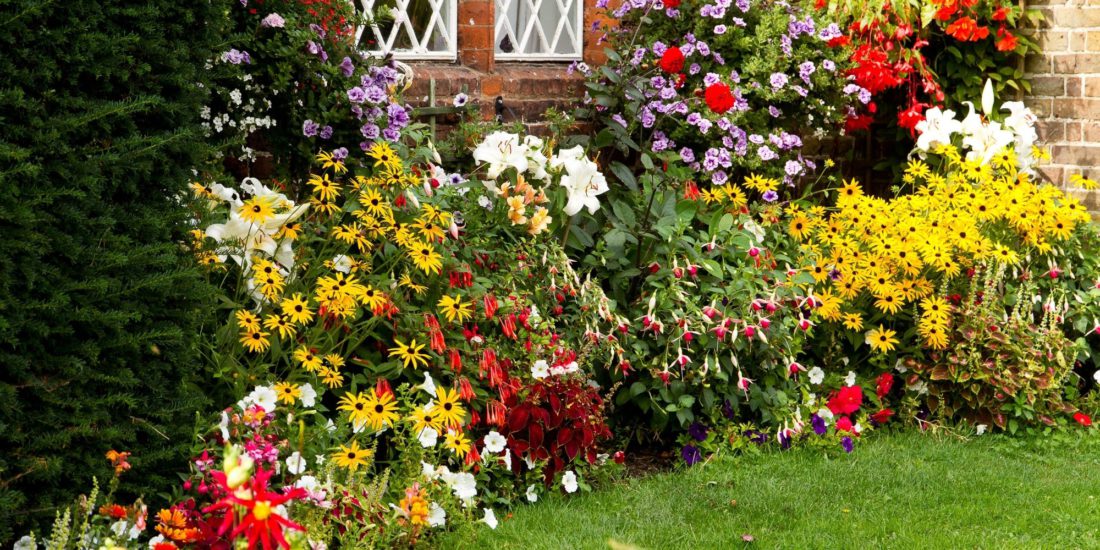
With Christmas out of the way, lots of people choose to put their homes on the market in spring, so they’re ready to move in summer. It’s likely that you haven’t paid a great deal of attention to your garden during the winter months, so make it a priority to do some gardening before any photos are taken, and viewings take place.
Many people forget the first impression comes from the garden. Most sellers tend to focus on their property’s interior when preparing it for the sales market. One way to ensure your home captures choosy buyers’ attention is by creating a stand-out garden space. Not only can this help you secure a quick sale, but it can also add value to your property.
Here are some tips to follow to make your garden add value to your property:
Spruce it up
Even if your garden budget is small, a minor sprucing up of the space can make a big difference in how a buyer sees your home. Take a look around your garden and make a note of anything that needs repair work. This could be a broken fence panel or a shed requiring a fresh coat of paint.
Mow the lawn, cut back any foliage that has overgrown. If a buyer sees an uncared garden, they will be far more likely to view the rest of your property in a similarly negative light. Just like inside your home, some decluttering and garden maintenance can add value to your property.
A splash of colour
Once your garden is looking well kept and tidy, it’s time to add some colour with a few well-chosen plants.
While many buyers look for gardens that are low maintenance, having some nice pots dotted around will add to their first impressions of your outdoor space in the spring or summer months. You want the buyers to visualise living there, so have pot plants filled with flowers to give it colour and the lawn mowed to make it look tidy.
Add a key selling point
A well-maintained garden will make sure a buyer is not put off your property, but something more can make them want to buy your property above any others they have seen. This will require a bit of a budget but should also add value to your home when it’s on the market. Perhaps consider a summer house or even a shed if your budget doesn’t stretch to more complicated constructions. Whether or not your garden is a sun-trap, make the most of any rays by adding a patio or area of decking to your garden, with a table, chairs and parasol, where buyers can picture themselves with a frosty beer before you know it. Buyers love to entertain in their gardens, which means the need for some hard-standing space is stronger than ever.
A little paint goes a long way
Don’t underestimate the impact of a good coat of paint on fences, sheds and other wood in the garden. Make sure to give a facelift if you have an existing summer house by adding a touch of colour. If the garden is presentable, it will be more attractive to viewers and could increase the price a potential buyer is willing to pay for your home.
Style it out
Don’t underestimate the importance of a bit of creative styling to sell your garden. Help potential buyers visualise the dream by setting the scene with a stylish dining set or some loungers. Adding some additional lighting, too, that can be used after the sun has dipped below the horizon.
Secure the garden
Buyers will also be looking at your garden from a practical position, which means security will be in their minds, too. Potential buyers may have pets, such as dogs, so they will want to see that your garden is secure and safe, especially if they have children.
If they are placing valuable items in a shed, they’ll want to see that the garden is also burglar-proof with movement-activated lighting and well-secured gates.
Make it private
Another key thing for buyers will be privacy. If neighbours overlook your back garden, you should look to do something about it. If it isn’t too expensive, add hedges or trees in key spots or build a privacy screen for your patio or decking area. You can also use large planters arranged along an area where you need privacy or grow some bamboo in pots and place these alongside your fence for added screening.
Make sure it’s low maintenance
Consider your garden’s potential upkeep. The key to making a garden of any size desirable is making sure that it looks appealing without making buyers anxious about its maintenance. Do not overspend on certain design features or installations that a future buyer may remove.
Selling a property has a lot to do with visual appeal. If it doesn’t look nice, it just won’t be attractive enough to bring in the offers. Working on your garden and making sure it looks attractive and tidy is one way to make it more likely to sell. Making an effort to brighten up your garden space could add value to the property. Having a well-kept outdoor space can add as much as 20 per cent to the value of your home. Considering that prospective buyers want to imagine themselves in the property, a good-looking garden can be a key factor in a sale.
Clare Hughes
clare.hughes@exp.uk.com
07958 031122



